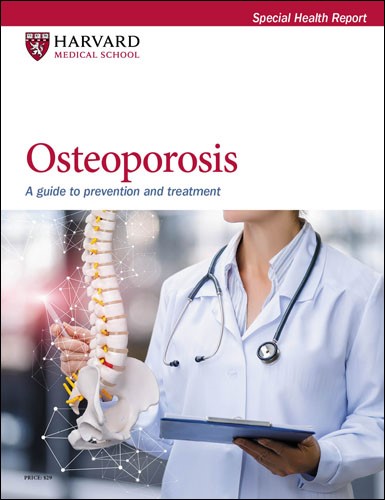Fracture reduction
The primary goal of skeletal fitness is to protect you from broken bones as you get older. Exercise helps by building stronger bones, but it helps in other ways, too.
For one, strength training increases muscle mass, which in turn enhances strength, muscle control, balance, and coordination. Good balance and coordination can mean the difference between falling—and suffering a fracture—and staying on your feet. Strong evidence shows that regular physical activity can reduce falls by nearly a third in older adults at high risk of falling.
Certain types of activity may be particularly beneficial when it comes to improving balance. One example is tai chi, a low-impact exercise practice, in which you move through a series of slow motions. Throughout these gentle movements, the muscles are relaxed rather than tensed. But because you move very slowly, shifting your body weight from leg to leg, your muscles are continually engaged in controlling your movements and maintaining balance. You are also bearing your body weight. Of particular importance, tai chi is safe for people who are elderly, frail, and out of condition— individuals at particularly high risk for falls and broken bones.
Exercise can also help you stand taller and straighter, which might indirectly protect your bones. Various studies have correlated a stooped posture with poor balance. You might even gain a little height in the process. In a study published in the Journal of Bone and Mineral Research, women with osteoporosis or osteopenia who did high-intensity resistance training twice a week for eight months gained nearly a quartercentimeter in height, while those who didn’t exercise shrank by an equivalent amount.













